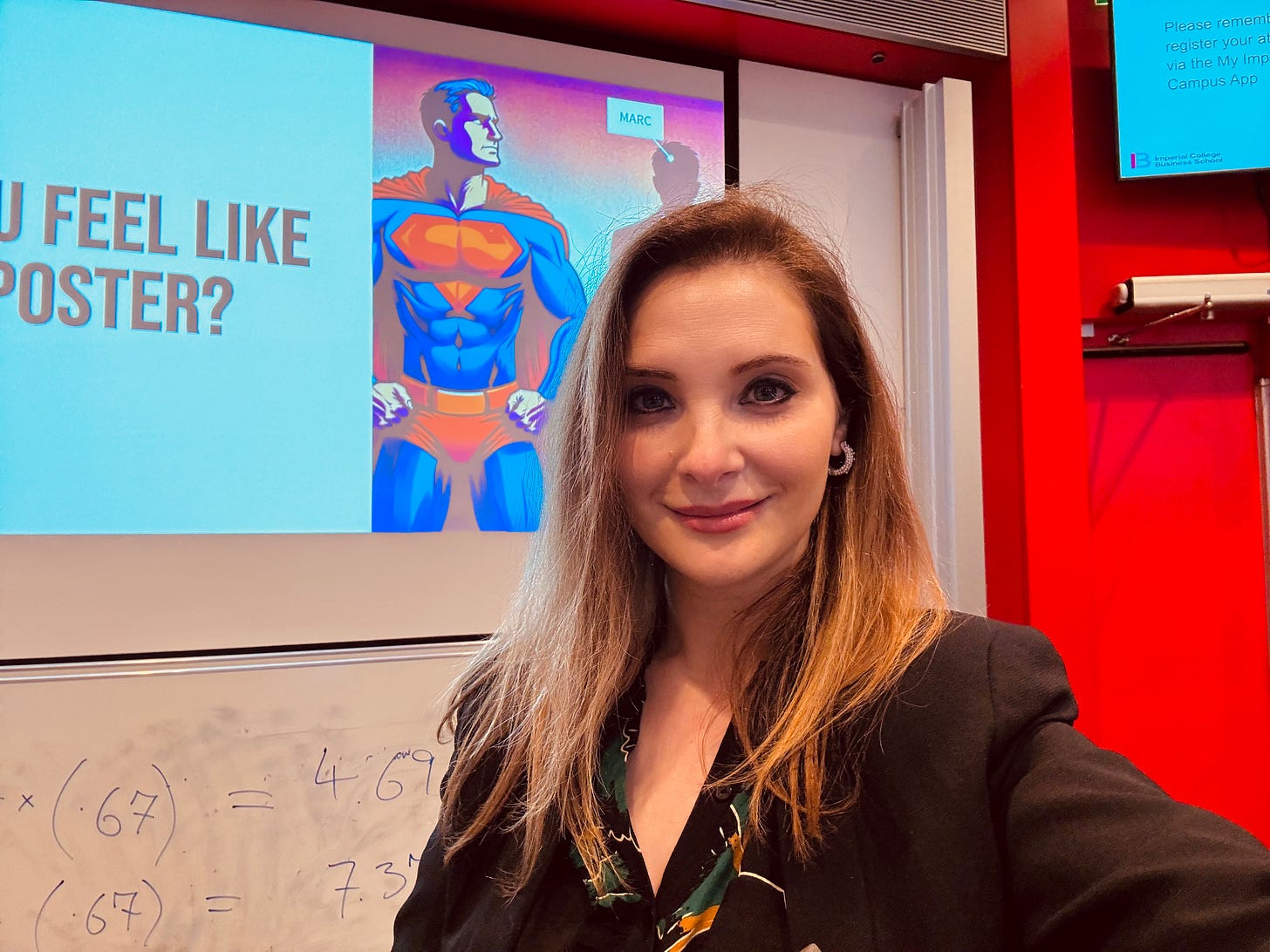🧠 I've been thinking about the one thing that most powerfully reshapes our self-perception and reality: visualisation. Just recently, I was invited to share this transformative tool with MBA students at Imperial College London, while talking about how to combat imposter syndrome.
Far from being a tool for daydreamers, visualisation has the capacity to trick our brains into confidence. And prime our neural pathways for success.
Elite athletes have long harnessed visualisation to gain a competitive edge. Imagine a golfer visualising the perfect swing before it happens, or a sprinter feeling the tape breaking across their chest before the race begins. In a similar vein, we can use these principles when facing our own high-stakes situations - be it a pivotal presentation, a challenging negotiation, or, in the case of the MBA students, stepping into leadership roles with assurance.
📢 Ask yourself:
“What scenario or event in my life could benefit from a positive visualisation?”
“How can I incorporate detailed, sensory-rich imagery into this mental rehearsal to make it as real as possible?”
“Can I feel the emotions and physical sensations associated with my desired outcome as I visualise it?”
Embarking on this introspective journey is an invitation to script your success and how you want to feel before it unfolds.

💡The Revelations:
Neuroplasticity, the brain’s ability to rewire itself in response to thought and activity, lies at the heart of this process. By engaging in mental rehearsal, we not only prime our minds for a positive outcome, but also our bodies. The brain’s difficulty in distinguishing between vivid imagination and actual experience means we can 'trick' ourselves into a state of preparedness and confidence.
Research, such as Dr. Alvaro Pascual-Leone's 1995 study, shows that visualisation can enhance physical performance similarly to actual practice, demonstrating that mental rehearsals strengthen neural pathways just like physical execution. This underscores the profound impact of imagined experiences on our cognitive and physical capabilities.
To start putting this into practice today, I invite you to engage in this simple visualisation:
Choose an upcoming scenario that stirs nervousness (or apathy) within you. Close your eyes and paint this scenario in your mind’s eye with as much detail as possible.
Where are you? What can you see? Who is with you? What are you doing? What can you touch, smell, taste? Immerse yourself in this scene, focusing on positive outcomes and the feelings they evoke. Visualise every step leading to your success, from the initial breath to the final outcome. The key here is in the detail and emotional engagement. Allow yourself to really feel the experience.
Reflecting on What Comes After
Afterwards, ponder the aftermath of your imagined success. How do you feel? Have you discovered gaps in your awareness that need filling? Did you realise anything new about your values and what truly matters to you in this scenario? This reflective practice not only solidifies the envisioned success but also deepens your understanding of yourself and your motivations.
Remember, visualisation is not a magic wand but a tool in your arsenal. It requires consistency, belief, and action to translate these mental rehearsals into tangible achievements.
💛 Product I’m loving: The Ocado app’s recipe feature is transforming the way we cook! Perhaps I’m late to the party, but I’m yet to meet anyone who already knows about it. Simply go to the ‘Recipes’ tab, search for something you fancy, or just be inspired by their suggestions. Then press ‘Buy Ingredients’ and, like magic, they end up in your shopping basket. Makes meal-planning a lot easier.
Thanks for being here,





